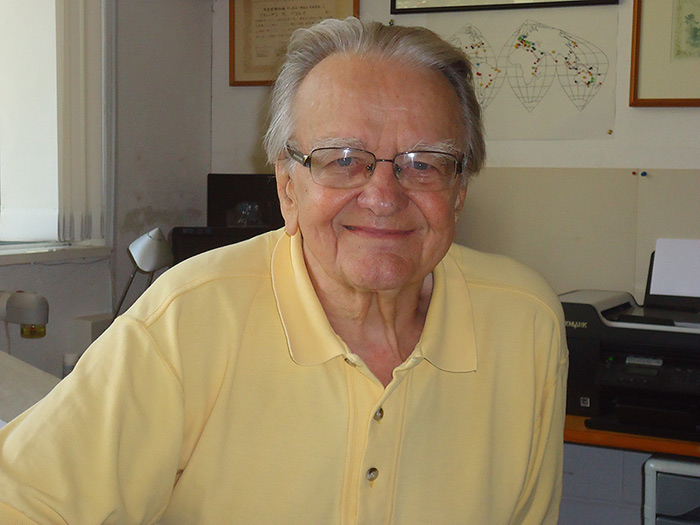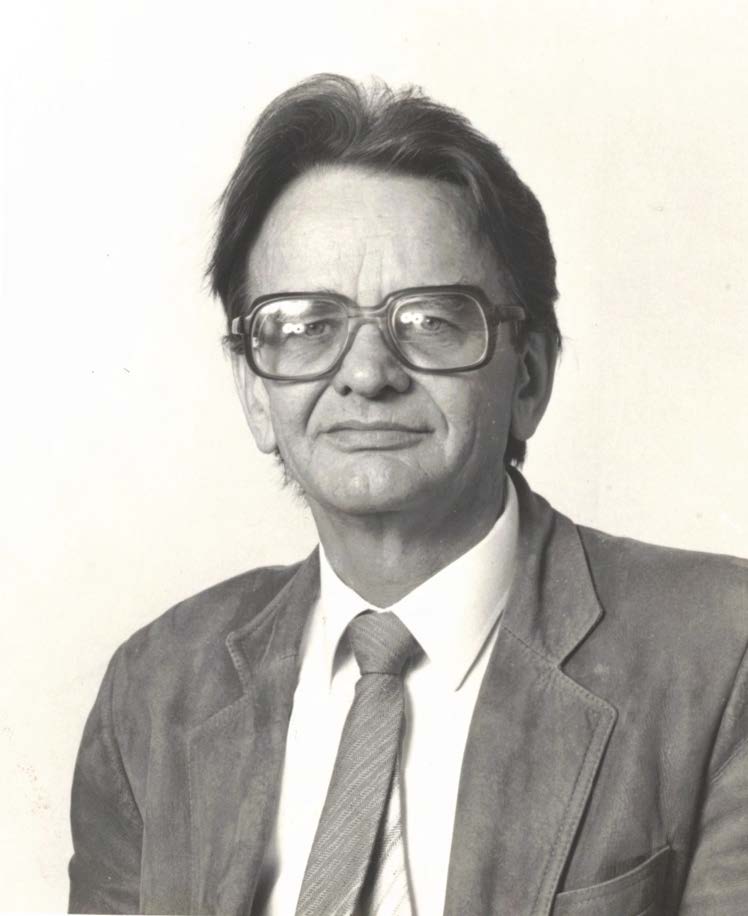Dr Steven Szokolay AM, a former UQ Head of School and a global leader in sustainable design, passed away in Brisbane on 8 June 2024, aged 96 years.

Dr Szokolay is remembered by friends and colleagues for his strong work ethic, his dry sense of humour, and the significant scale and importance of his work in architectural science.
“As a professional architect and renowned [educator] who led an architectural science world, he dedicated so much to the academic community. His legacy is a profound and lasting one,” says Associate Professor Dr Pattaranan Takkanon of Kasetstart University, who was a student of Dr Szokolay’s at UQ in the early 2000s.
“I will always remember him as my beloved teacher, a great man, and my role model.”
Born on 22 November 1927 in Budapest, Hungary, Dr Szokolay was the son of an architect and grandson of a civil engineer. He began his architectural studies in Budapest in 1947, but his degree was interrupted when he and some university friends were arrested for speaking up against the Communist regime. After being held in prison for six years, he was unable to continue his studies and so he worked as a bricklayer.
Then in 1956 during the Hungarian Revolution, Dr Szokolay fled Hungary with his first wife and their baby, finding refuge at the Traiskirchen refugee camp Austria. He emigrated to Australia in 1957. Dr Szokolay went on to obtain a Diploma in Architecture from the University New South Wales (1961), a Master of Architecture from University of Liverpool (1968), and a Doctor of Philosophy from The University Queensland (1978).
He started his architectural career working in Sydney and London in the early 1960s, and then began teaching as a lecturer at the University of Liverpool, with a secondment to the University of East Africa, Nairobi. He was then a senior lecturer in environmental science at the Polytechnic of Central London.
In 1974 Dr Szokolay joined The University of Queensland as a senior lecturer and director of the Architectural Science Unit. He was then appointed Reader and went on to become Head of School (1985–1990). From 1992 he was an Honorary Associate Professor, maintaining part-time supervision of postgraduate research students alongside his own professional practice as an energy and environmental consultant.
Dr Szokolay completed many consultancies across government and private sectors, including for UNESCO, the United Nations Industrial Development Organisation, the Queensland Department of Education, the Australian Building Codes Board, the Australian Greenhouse Office and Woods Bagot.
He also made a significant contribution to the discipline through his seminal writings on architecture and passive energy consumption. He published well over 150 research papers and more than a dozen books, with many of the resources still in use in architectural schools across the globe. His books include Solar energy and building (1975: Architectural Press; Wiley), World Solar Architecture (1980: Architectural Press; Halsted Press), Environmental Science Handbook for Architects and Builders (1980: Construction Press); and Thermal Design of Buildings (1987: Royal Australian Institute of Architects).

Thirteen years after retirement, he released a new book on what was a driving passion of his – sustainable development. Titled Introduction to Architectural Science: The Basis of Sustainable Design (2004: Elsevier/Architectural Press), the book was “the ideal and only reference to the physical basis of architectural design” – providing the data required for architects to design buildings that maintain user comfort in a variety of conditions, with minimal reliance on energy intensive methods such as airconditioning. It compiled more than 10 years of research and lectures, and has now been reprinted and updated multiple times, as well as translated into Italian and Portuguese. A fourth edition is currently underway with a co-author for Routledge.
When he released the book, Dr Szokolay explained that architectural science provides the factual, physical basis for architecture concerned with not just what the building looks like, but also whether it works or not.
"One of the reasons I wrote this book is that sustainable development is such a fashionable term these days but about half the projects that use it don’t deserve the title,” Dr Szokolay said at the time.
"It is a very badly misused term so I wanted to establish some criteria.
"Now many building codes are enforcing [sustainability] requirements … but these codes are only aimed at eliminating worst practice and we have to think of ways to do things better."
Professor John Macarthur, who was a student of Dr Szokolay’s in 1978–79 and then a colleague at UQ from 1990, remembers him as a dedicated educator and researcher.
“Steve was a big personality … He was super serious and with a very direct manner of speech. I came to realise that he liked a good argument and could be funny. You could tease him if you were ready to jump back quickly before a counter strike,” says Professor Macarthur.
“Over the years, and especially during his long and active retirement, I was amazed at the time and consistency of effort that he put into supervising PhD students and building a research culture around environmental performance of buildings, a sure foundation for the work we need to be continuing today.”
Professor John Martin Evans, Director of the Research Centre Habitat and Energy at the University of Buenos Aires, was an early colleague of Dr Szokolay’s. He remembers Dr Szokolay for his scientific rigour and conceptual clarity. “He was an outstanding teacher and researcher, generous with his characteristic dry humour,” Professor Evans says.
Associate Professor Rosangela Tenorio of the University of Western Australia says that being a PhD student of Dr Szokolay’s was a privilege.
“[Dr Szokolay] changed the lives of many like me through the knowledge he shared with us and his professional ethics and values,” she says.
“He was a kind and honest human being, of rare intelligence and wisdom, versed in so many subjects. He was a true renaissance man, with great sense of humour and a real love of the arts. We will miss him.”
Richard Sale, senior architect at Architectus Conrad Gargett, remembers being an undergraduate student returning from a “year out” in 1975: “Steve’s lectures in architectural science were breaths of fresh air for their clarity and graphic quality,” says Mr Sale.
“Later as a postgraduate student of Steve’s, my abiding memory of him in his office is the aroma of the elixir percolating from his little coffee maker – the sort of coffee which would hold a spoon vertically. I blame my own coffee addiction on this!
“Steve was a world-recognised academic, teacher and author in all matters of architectural science. He did not entertain fools lightly, but his contribution to technical architecture was enormous. And who can forget his reverse brick veneer.”
Dr Szokolay was a Fellow of the Australian Institute of Architects and an Honorary Life Fellow of the ANZ Solar Energy Society and the ANZ Architectural Science Association. In 2001 he received the honour of Order of Australia Member for service to architecture, particularly in the development of solar energy use and solar efficient design, and a Centenary Medal for long and distinguished service to the community through education. In 2003 he was awarded a UQ Centenary Medal for long and distinguished service to the community through education.

Dr Szokolay lived by two guiding principles: "Carpe diem" (seize the day), and "Quidquid agis prudenter agas et respice finem" (whatever you do, do it wisely and consider the end).
Dr Szokolay’s wife, Katalin Szokolay, would be pleased to hear anecdotes and memories from those who shared time with him. Katalin can be contacted on k.szokolay@gmail.com.



